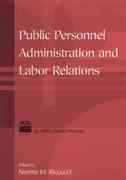Question
Maritime transportation is a crucial factor for economic growth. The shipping industry is structured through three main actors: -The Port Authority is generally a public
Maritime transportation is a crucial factor for economic growth. The shipping industry is structured through three main actors:
- -The Port Authority is generally a public entity that defines port practices and price regulation and can operate the terminal.
- -Terminal operators manage terminal activities.
- -Shipping line companies move freight from origin to destination.
- Due to the increase in maritime transportation, larger container ships have been invested in bigger vessels generating economies of scale and reducing carrier costs during the last decades. The Swedish port system comprises 52 port authorities. Generally, local governments own seaports, and consequently, port charges represent a source of revenues for the municipality. Thus, there is intense competition among nearly port authorities to attract more traffic. In terms of traffic, the Port of Gothenburg is the largest seaport in Sweden. It has an extensive land transport connection through railway infrastructure to reach almost all regions in Sweden.
- * For further information, check: "Presentation Assignment 1".
Assignment
- Assuming that there is no concession contract between the port authority and terminal operators,
- 1both port authorities own and manage their container terminals .
- This case study concerns market structures, firm strategies and interaction, and pricing schemes. The assignment is divided in two parts to analyzes a competition situation between two shipping lines and two port authorities.
- Firstly, suppose that each shipping line needs to transport a container cargo to Sweden. The vessels have two alternatives to design their route: the Port of Gothenburg and the Port of Helsingborg, i.e., the two main ports located on Sweden's western coast. Clearly, the cost that each shipping line will incur depends on the route choice, i.e., different port authority fees and costs.
- Secondly, suppose that two port authorities (i.e., the Port of Gothenburg and the Port of Helsingborg) with different characteristics aim to attract more traffic to increase their revenues (through their port dues).
- The report is expected to explore and analyze the following two parts:
- Considering the actors (i.e., two shipping lines and the port authorities) and the predetermined cost functions described below (i.e., transportation costs and port fees), and determine the equilibrium outcome (price, quantity, and profit) of the game.
Letifor = 1,2denote the number of containers transported by shipping linei.Assume a standard inverse demand function for a container of the form = 10000 (1+2)
and a total transportation cost function, excluding fixed costs, of the form
i=100i +d^t/2 (i)^2for =1,2, and t=,hh,
representing low and high diseconomies of scale, i.e., ^low < ^high.
When both shipping lines choose the port of Gothenburg, which is characterized by low diseconomies of scale, each vessel incurs a lump sum of 1200 in port fees. In the case when both vessels choose the port of Helsingborg, which is characterized by high diseconomies of scale, each vessel incurs 1000 in port fees. Lastly, when the shipping lines choose different port authorities, each vessel incurs 1500 in fees.
Consider that competition takes a Cournot form and determine the equilibrium of this one-shot simultaneous game.
2.Suppose now thattheshipping linescompete on quantities in a sequential game (Stackelberg competition), where shipping line 1 acts first (the leader) and shipping line 2(the follower)acts after having observed shipping line 1's move.Analyze firms' strategies in competition. You have to consider the informationgiven in Question 1 in order to determine the equilibrium of this newgame.
3.Let us now reconsider the game described in Question 1 and assume that the shipping lines can cooperate/collude. Determine the equilibrium of this game. Note however that collusion is not self-enforcing in one-shot games. It can, however, be sustained as a Nash-Cournot equilibrium in an infinitely repeated gamewith effective punishment. Determine the defection trigger/threshold where there is no incentive to deviate from the collusive agreement.
Step by Step Solution
There are 3 Steps involved in it
Step: 1

Get Instant Access to Expert-Tailored Solutions
See step-by-step solutions with expert insights and AI powered tools for academic success
Step: 2

Step: 3

Ace Your Homework with AI
Get the answers you need in no time with our AI-driven, step-by-step assistance
Get Started


